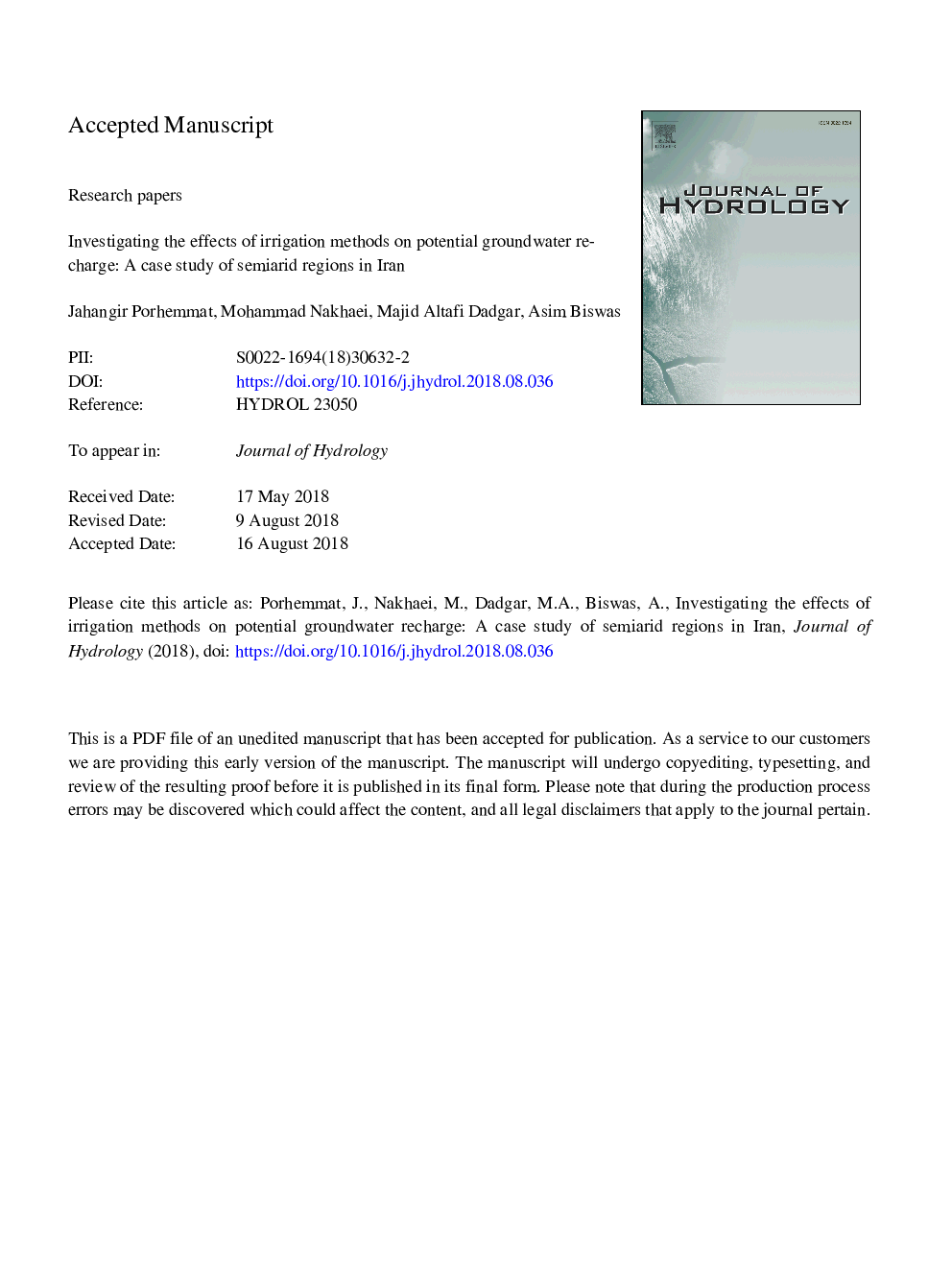| Article ID | Journal | Published Year | Pages | File Type |
|---|---|---|---|---|
| 10118234 | Journal of Hydrology | 2018 | 36 Pages |
Abstract
Water saving irrigation systems (e.g. drip and sprinkler) conserve water but they can reduce potential groundwater recharge (PGR) over traditional systems (e.g. furrow) and may impair sustainability, particularly in arid and semi-arid regions. This study used a hybrid (experimental and numerical) approach to determine the effects of different irrigation systems on the dynamics of PGR in a semi-arid region. A 210-cm tall, 300-cm long and 150-cm wide soil column was prepared to simulate the soil environment of the Karaj region in Iran. A range of soil and environmental properties were monitored during a winter wheat cropping season (â¼140â¯days) under different irrigation systems (treatments). Soil water content and drainage were measured under each irrigation system and these were used to a) calculate different components of water balance and b) model long-term soil water flow dynamics using HYDRUS-1D. About 14.83, 0.14 and 0.80% of the applied water (as irrigation and precipitation) under furrow, drip and sprinkler systems, respectively, were drained below 200â¯cm and this was estimated as the PGR. Annual PGR under furrow irrigation was estimated in the range of 19-228â¯mm, with an average of 111.3â¯mm. However, mean annual PGR under the sprinkler (4.1â¯mm) and drip (0.7â¯mm) was an order of magnitude lower than furrow irrigation. Deep drainage leading to PGR under the water saving methods was observed only after a very large rainfall event. The absence of large rainfall events between irrigations reduced PGR under water-saving irrigation systems in the arid and semi-arid region. The simulated model was further used to estimate the total amount of PGR over a 20-year period of wheat cultivation. Furrow irrigation estimated much higher amounts of PGR (222.7â¯cm) over drip and sprinkler systems; this raised questions about the sustainability of water-saving irrigation methods in the study area. As groundwater is the main source of irrigation in these areas, the recharge capacity of the adopted methods is critical to ensure the future availability and use of groundwater in the Karaj region of Iran as well as similar arid and semi-arid regions elsewhere.
Related Topics
Physical Sciences and Engineering
Earth and Planetary Sciences
Earth-Surface Processes
Authors
Jahangir Porhemmat, Mohammad Nakhaei, Majid Altafi Dadgar, Asim Biswas,
